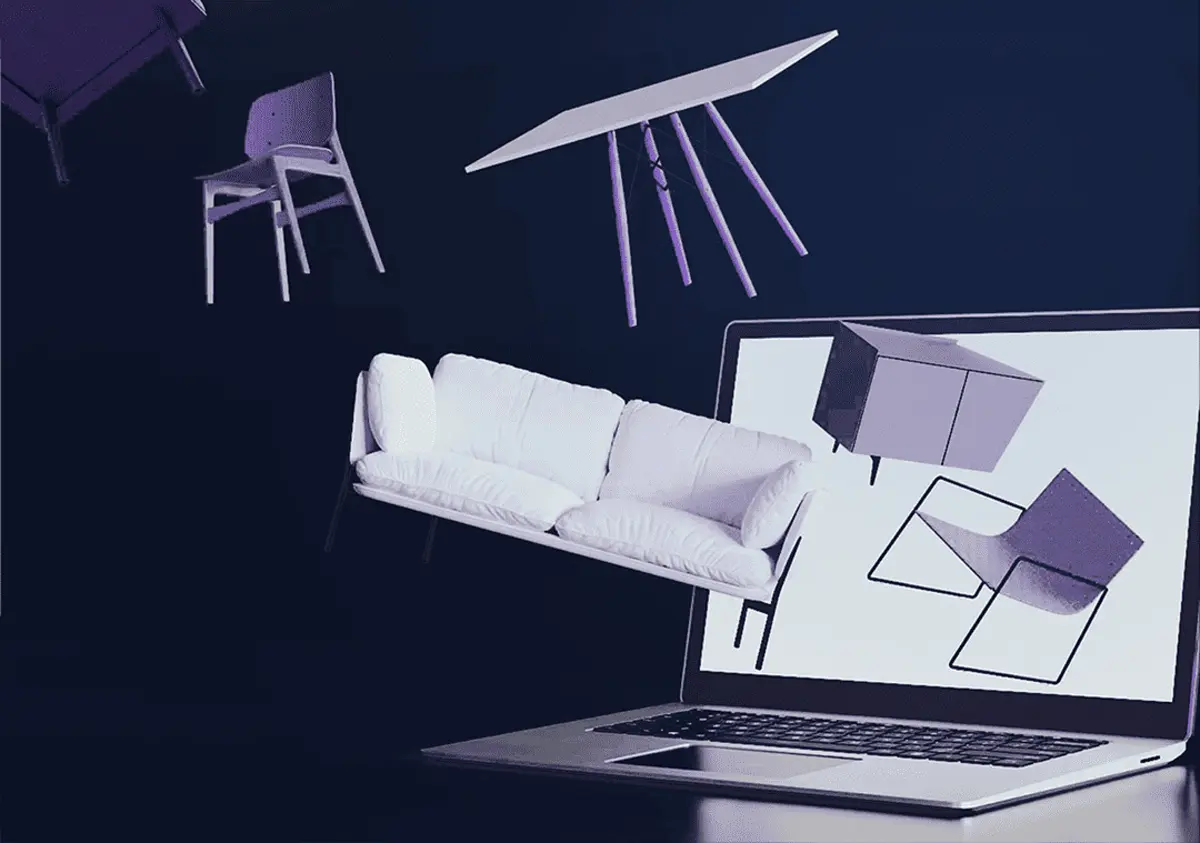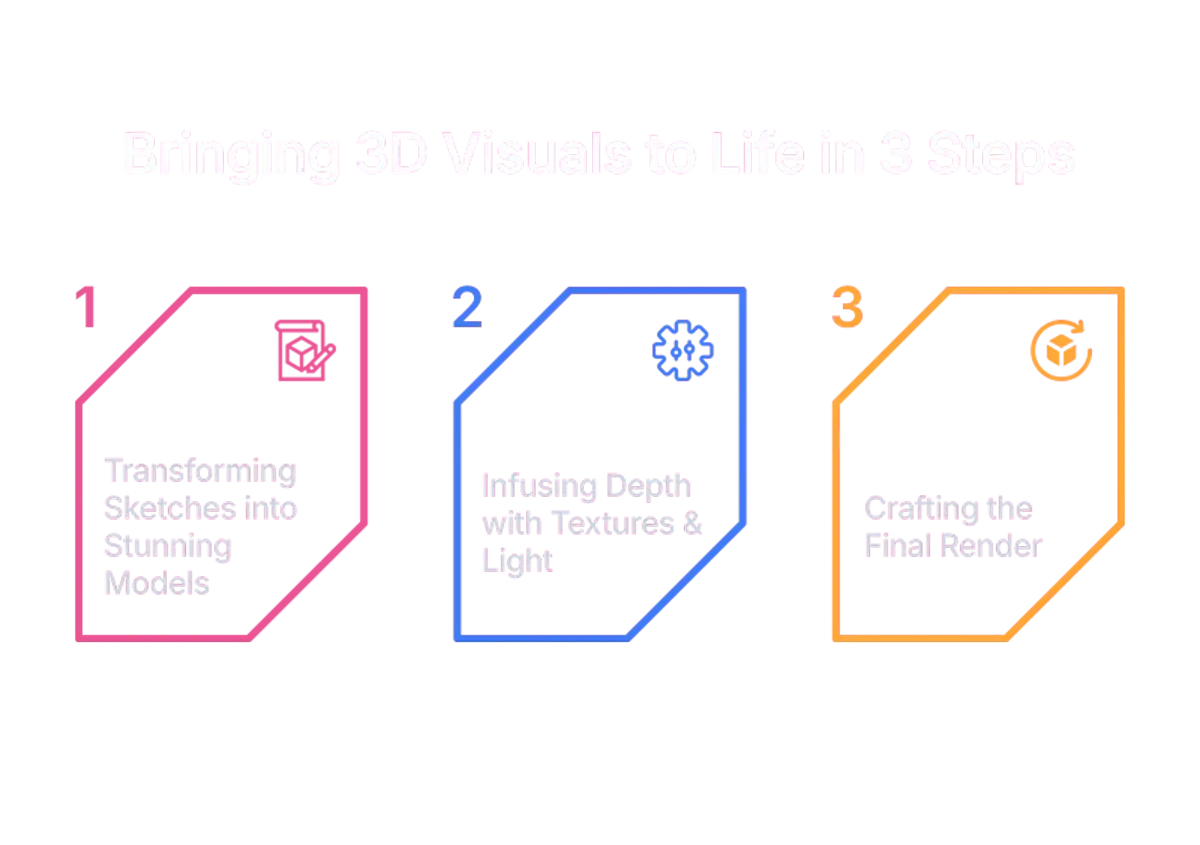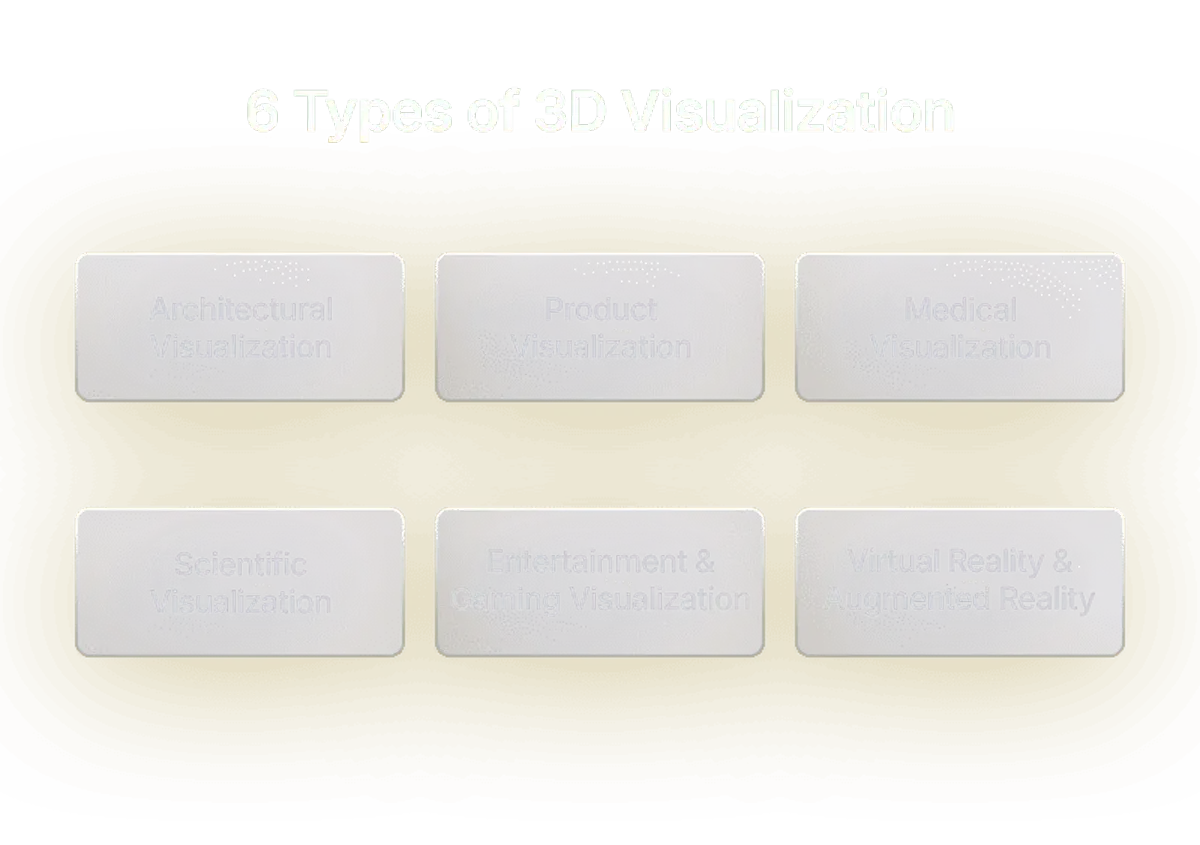What is 3D Visualization? A Simple Guide for Beginners
Learn how 3D visualization turns your imagination into reality.

5 MIN READ
Published October 01, 2024

Written By
Sasikumar Janakiraman
Remember the last time you quickly sketched out your dream house on a napkin? It’s a great start, but imagine being able to step inside that sketch, walk through the rooms, see how sunlight pours into the living room, or explore every corner from different angles, bringing your vision to life.
That’s the magic of 3D visualization. This guide breaks down the basics of 3D visualization service, explores its core components, and highlights the tools needed for both beginners and professionals looking to enhance their skills.
What is 3D Visualization?
In simple words, 3D visualization is the process of creating lifelike, three-dimensional images or models on a computer. Think of it like taking an idea from your head and turning it into something you can actually see and interact with on a screen.
3D visualization is widely used across industries, from architecture to healthcare, and even in entertainment and marketing. It helps people make better decisions by showing exactly what something will look like before it’s made.
-> But How Does 3D Visualization Work?
- Imagine you have a rough sketch or blueprint.
- 3D visualization tools take that flat image and turn it into something you can view from all angles.
- It’s like holding an object in your hand, only it’s DIGITAL!

Designers use software to build the model, add textures (like color or surface details), apply lighting to make it look realistic, and then render the final image or animation.
Quick Tip: Next time you’re planning a renovation or designing a product, think about how useful it would be to see a 3D version before committing to anything. It’s like a test run, without the mess!
The Core Components of 3D Visualization
-
1. 3D Modeling (Building the Structure)
At the heart of 3D visualization is 3D modeling. This is where the object's shape is created, using points (vertices), lines (edges), and flat surfaces (polygons). Designers use 3D modeling software to sculpt digital objects from scratch or by manipulating basic geometric shapes.
-
2. Texturing (Adding Surface Details)
Once the shape is ready, texturing is like giving your model its skin. This is where you add details like colors, patterns, or surface textures (such as smooth metal or rough wood). Think of texturing as painting a sculpture, it adds realism and makes your model look authentic.
-
3. Lighting (Bringing Depth and Mood)
In 3D visualization, you have full control over lighting — whether it’s natural sunlight, soft indoor lighting, or dramatic spotlight effects. Just like in photography, the right lighting can make or break a scene, bringing depth and mood to your model.
-
4. Rendering (The Final Image)
Rendering is the process of converting the 3D model, textures, and lighting into a final image or animation. This step calculates the interactions between light, shadows, textures, and materials to produce a photorealistic result.
-
5. Animation (Bringing the Model to Life)
While not always required, animation is a critical component for many 3D visualization projects, especially in industries like gaming, filmmaking, or product demos. Animation involves creating movement, like a character walking or a product rotating to show different angles.
-
6. Camera Angles (Framing the Scene)
You can control how the scene is viewed through camera angles. This typically involves positioning a virtual camera within the scene to simulate different perspectives, like zooming in or showing an object from above. Figuring out the right angle can dramatically affect how the model is perceived.
Partner with Asia's Leading 3D Visualization service and Design Experts

These are just a few of the core components that make 3D visualization such a powerful tool. Depending on the project, more elements like post-processing or physics simulations may come into play, but these basics provide a strong foundation to start creating realistic models and images.
6 Types of 3D Visualization
3D visualization comes in many forms, each designed to fit different industries and needs. Let’s explore the most common types of 3D visualization that help bring ideas to life in various fields.
-
1. Architectural Visualization
Architects use architectural visualization to create detailed 3D models of buildings, interiors, and landscapes. This type of visualization helps designers, clients, and construction teams see exactly how a space will look before construction begins. It includes photorealistic renderings, virtual walkthroughs, and 360-degree views.
-
2. Product Visualization
Before products hit the market, they often go through product visualization. This allows designers and manufacturers to create detailed 3D models of products, from electronics to cars, and fine-tune them before production.
-
3. Medical Visualization
In healthcare, medical visualization helps doctors and researchers see detailed 3D models of human anatomy or medical devices. This is used for education, diagnostics, and even planning complex surgeries.
-
4. Scientific Visualization
Scientific visualization is used to create 3D models of complex scientific data. It’s useful in fields like physics, biology, and engineering, where visualizing abstract data helps scientists understand and communicate their findings.
-
5. Entertainment & Gaming Visualization
The entertainment industry uses 3D visualization extensively, particularly in video games, films, and animations. This type of visualization involves creating characters, environments, and objects that interact in dynamic, vivid ways.
-
6. Virtual Reality (VR) and Augmented Reality (AR)
VR and AR visualization take 3D models to the next level by allowing users to interact with them in real-time. With VR, users can explore a fully immersive 3D world, while AR overlays 3D models onto the real world through devices like smartphones or VR headsets.
These are just a few of the most common types of 3D visualization, but the possibilities are nearly endless.
7 Popular Tools for 3D Visualization
3D visualization requires powerful software to bring ideas to life. Here are some of the most popular tools used across industries:
-
1. Blender: The Free Powerhouse
Architects use Blender is one of the most popular free tools for 3D modeling, animation, and rendering. Despite being open-source, it offers professional-grade features, making it a favorite among both beginners and experts. Blender is often used in industries like film, gaming, and even architectural design.
Why Use Blender?
- It’s free with no strings attached.
- A strong community offers tons of tutorials and resources.
- It handles everything from simple models to complex animations.
-
2. Autodesk 3ds Max: Perfect for Detailed Models
When it comes to precision and high-quality rendering, Autodesk 3ds Max is a go-to tool. It’s widely used in industries like architecture, engineering, and product design. Its strong modeling capabilities make it perfect for creating detailed, intricate 3D models.
-
3. SketchUp: Easy and Accessible
If you’re new to 3D visualization, SketchUp is a great place to start. Known for its user-friendly interface, SketchUp is popular in architectural design and interior decoration. You can create simple 3D models quickly, and it’s available in both free and paid versions.
Fun Fact: SketchUp is often used in schools and universities to teach students the basics of 3D modeling because of its simplicity and ease of use.
-
4. Autodesk Maya: The Animation Giant
For animators and visual effects artists, Autodesk Maya is a powerhouse tool. Known for its top-notch animation features, Maya is used in everything from blockbuster movies to video games.
- It’s also great for creating complex simulations like fluid, cloth, and hair movement.
- If you’ve ever watched an animated movie or played a high-end video game, there’s a good chance Maya played a role in bringing those characters and worlds to life.
-
5. Cinema 4D: User-Friendly for Motion Graphics
Cinema 4D is widely known for its intuitive interface and is specifically popular in motion graphics and animation. It’s used by professionals in the advertising and design industries, offering seamless integration with other software like Adobe After Effects.
Pro Tip: If you’re working on 3D visualization for ads or animated logos, Cinema 4D is a top choice because of its ease of use and compatibility with design tools.
-
6. Lumion: The Architect’s Best Friend
For architects and designers who want to bring their projects to life in stunning, realistic detail, Lumion is a game-changer. This real-time 3D rendering tool is specifically designed for architectural visualization, allowing users to create lifelike environments with ease.
-
7. Unreal Engine: Not Just for Games
While primarily known for powering video games, Unreal Engine is also a powerful tool for 3D visualization. Its real-time rendering capabilities make it ideal for creating interactive and immersive experiences, notably in VR and AR. Many architects are now using Unreal Engine to create immersive walkthroughs of their designs, letting clients explore buildings in real-time.
Common Applications of 3D Visualization
- Architectural Design: Visualizing buildings and spaces before they’re built.
- Product Prototyping: Creating realistic models of products before manufacturing.
- Medical Imaging: Visualizing organs, tissues, and medical devices for surgery planning.
- Entertainment and Gaming: Building lifelike characters, environments, and special effects.
- Virtual Reality (VR) and Augmented Reality (AR): Immersive experiences where users can interact with 3D environments.
- Scientific Research: Modeling complex data for simulations in physics, biology, and astronomy.
- Marketing and Advertising: Showcasing products in a dynamic and engaging way for ads or demos.
- Education and Training: Creating interactive learning tools to teach complex concepts.
Challenges and Limitations in 3D Visualization
- High Cost of Equipment and Software: High-end 3D modeling software, like Autodesk Maya or 3ds Max, often comes with hefty licensing fees. Additionally, creating complex 3D models and renderings requires powerful computers with advanced graphics cards, which can be expensive to purchase and maintain.
- Steep Learning Curve: Learning how to create, texture, light, and render 3D models takes time and effort. Even tools that are more beginner-friendly, like Blender or SketchUp, come with a learning curve that can be intimidating for first-time users.
- Long Rendering Times: Rendering a high-quality 3D image or animation can take a lot of time, mainly for detailed models. Even with powerful hardware, rendering times can stretch into hours or even days, depending on the complexity of the scene.
- Hardware Limitations: 3D visualization requires a lot of computing power. If your computer doesn’t have a powerful processor or enough RAM, it can struggle to handle large files or complex models. This can lead to slow performance, crashes, or incomplete renders.
- Accuracy and Realism: Creating a truly photorealistic model requires a deep understanding of lighting, textures, and physics. Achieving the right level of realism can be tricky, and if the model or scene lacks detail, it may end up looking fake or incomplete.
- Data Management: Complex 3D projects can involve a lot of data, including textures, lighting setups, animation keyframes, and more. Managing all this data can become overwhelming, especially on larger projects with multiple collaborators. Poor data management can lead to lost files, corrupted projects, and missed deadlines.
While these challenges can be frustrating, there are ways to overcome them. With proper training, the right equipment, and patience, many of these obstacles can be minimized.
Key Takeaways
By now you might be aware that 3D visualization is a powerful way to bring ideas to life across many fields — simplifying complex concepts, helping with decision-making, and enhancing creativity across the board. While there are challenges like cost and learning curves, the impact it has is undeniable.
Here’s what you should remember:
- Powerful Process: 3D visualization involves modeling, texturing, lighting, and rendering to bring concepts to life.
- Diverse Applications: Architecture, healthcare, gaming, and marketing are just a few industries using 3D visualization.
- Challenges Exist: High-end software and hardware can be expensive, but the ability to visualize complex ideas is worth the investment.
Start creating and see your ideas take shape in ways you never imagined!
About the writer :
Sasikumar Janakiraman, as the Creative Director at Zealous Services, brings a unique mix of creativity and technical skill. He’s passionate about 2D and 3D design, leading teams to create stunning 3D models and visualizations. ...Sasikumar loves working closely with clients, making sure their ideas come to life in the best possible way. His goal? To make design feel simple and exciting.
Read MoreFrequently Asked Questions
What’s the Difference Between 3D Modeling and 3D Visualization?
3D modeling refers to creating the structure of a 3D object using software, while 3D visualization is the process of rendering that model into a realistic, interactive image or animation. Think of 3D modeling as building the shape and 3D visualization as bringing that shape to life with textures, lighting, and realistic rendering.
How is 3D Visualization Used in Architecture?
In architecture, 3D visualization is used to create lifelike models of buildings and spaces before they are constructed. It allows architects and clients to visualize a project from every angle, ensuring that design decisions can be made confidently before construction begins. This includes creating walk-throughs, fly-overs, and 360-degree renderings.
What Hardware is Required for 3D Visualization?
High-quality 3D visualization requires powerful hardware, including a fast processor (CPU), a high-performance graphics card (GPU), and plenty of RAM to handle complex models. Many professionals use workstations designed for 3D rendering and visualization software, which also benefit from fast SSD storage to load large projects efficiently.
Can 3D Visualization Be Used for Marketing Purposes?
Yes, 3D visualization is increasingly popular in marketing. It’s used to create dynamic product visualizations, interactive demos, and immersive experiences, allowing consumers to explore products in ways that static images can't. Industries like automotive, real estate, and e-commerce leverage 3D visualization to showcase their products more effectively.
What’s the Learning Curve for 3D Visualization Software?
The learning curve depends on the software. Beginner-friendly tools like SketchUp have simpler interfaces and are ideal for basic models, while advanced software like Autodesk 3ds Max and Blender require deeper knowledge of 3D modeling, rendering, and animation techniques. Mastering lighting, texturing, and rendering can take time, but plenty of tutorials and resources are available online.